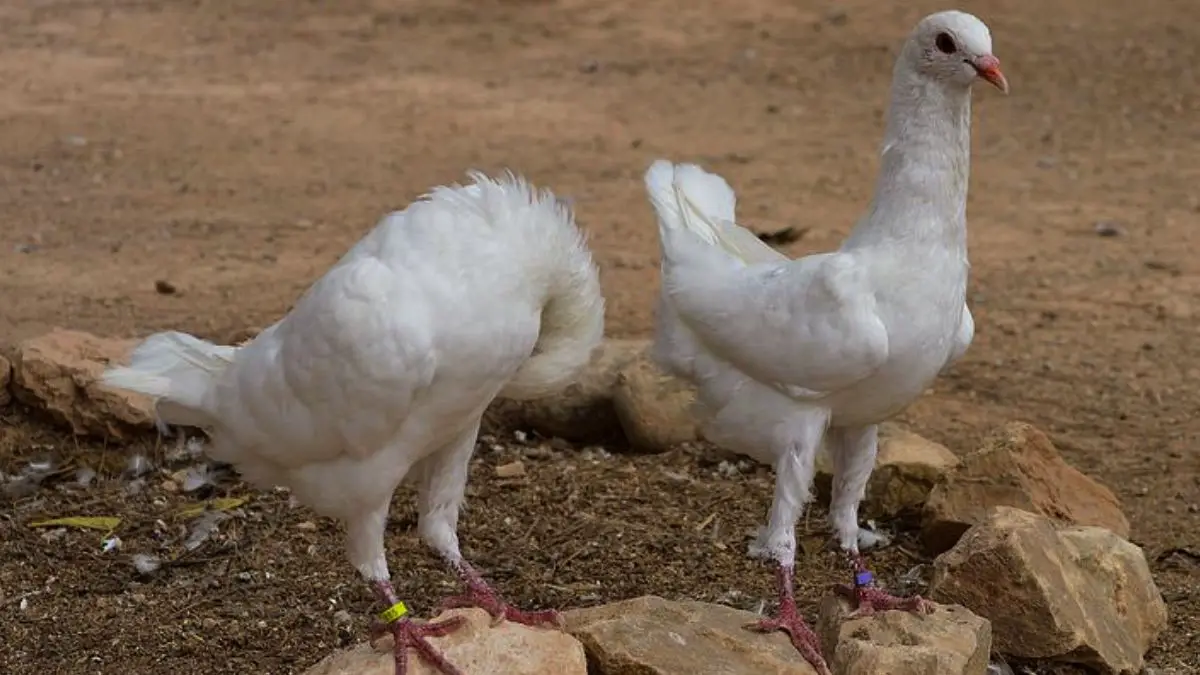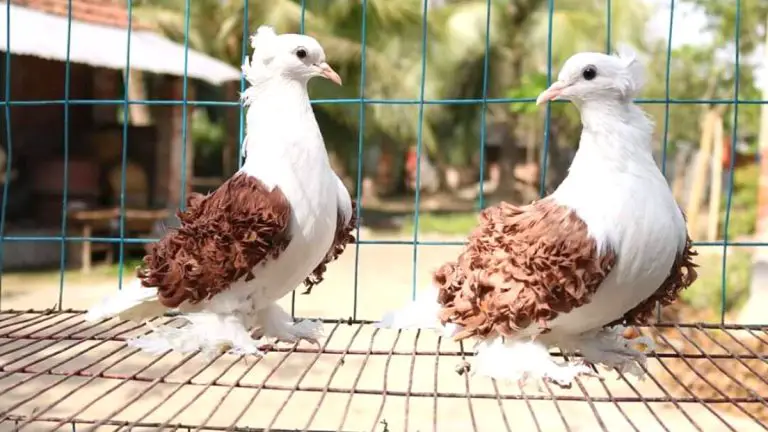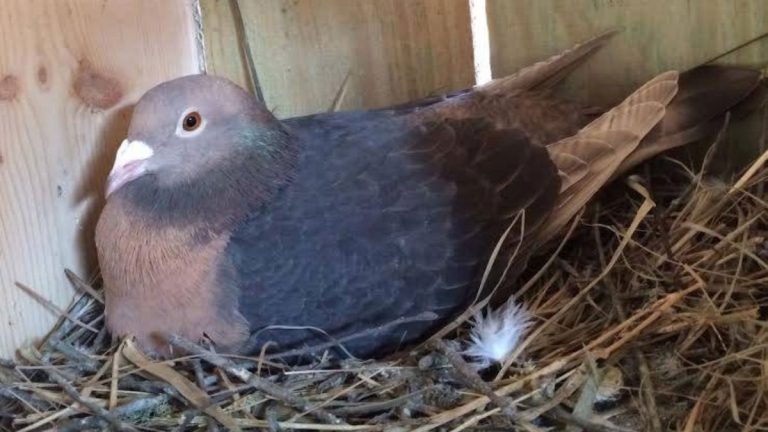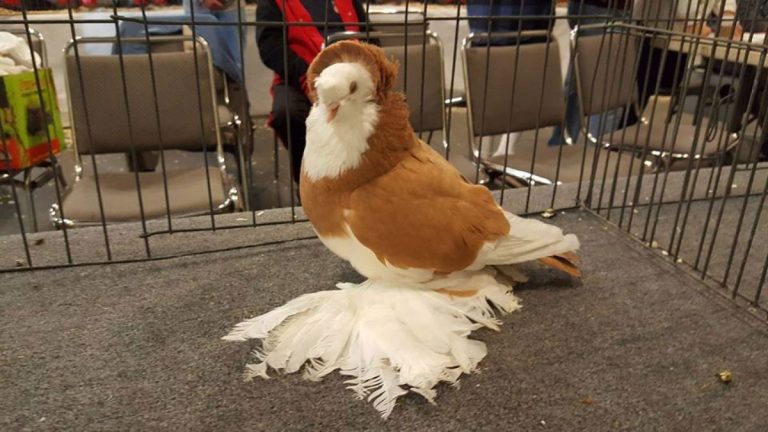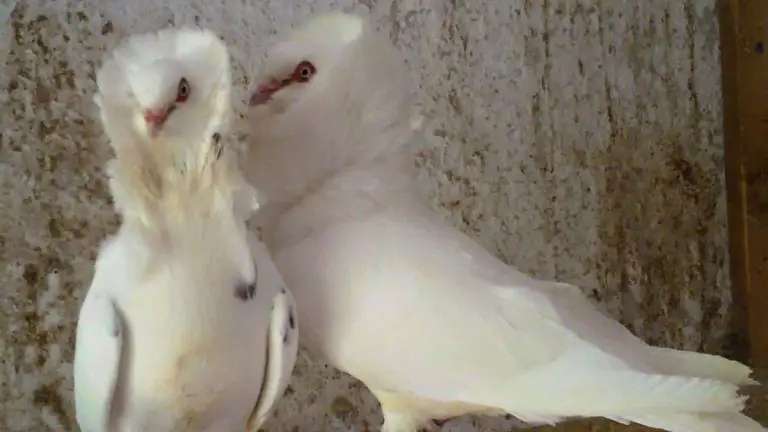Maltese Pigeon: Origin, Appearance, Behavior, Care, And More
Maltese pigeons are a sight to behold. Their beautiful light-gray-brown bodies coupled with distinct white patches on their neck makes them stand out as one of the most beautiful breeds of domesticated pigeons. What’s more, these birds are sociable and friendly. And their playful and affectionate nature makes you want to have them around all the time.
In this article, we go into full detail about everything you need to know about the Maltese pigeons from their history and origin to physical characteristics, behavior, housing, diet, breeding, cost, and lifespan. Plus, we have discussed their suitability as pets and how to take good care of them to keep them happy and healthy.
Maltese Pigeon Quick Facts:
| Scientific name | Columba livia domestica |
| Other names | Poule Maltais, Malteser |
| Breed name | Maltese |
| Origin | Unclear |
| Breed purpose | Exhibition |
| Size | Medium |
| Weight | 400 to 500 grams |
| Flying ability | Moderate |
| Cost | $50 to $500 years |
| Lifespan | 10+ years |
Origin and history
Due to its name, most people tend to believe that this bird may have originated from Malta island in the Mediterranean.
But this is wrong as the true origin of the bird isn’t quite clear. This pigeon breed is believed to have been first developed in Austria in 1800s. This area later became part of Germany.
The current breed is believed to have been a crossing of a German variety and the French Baghdad pigeon.
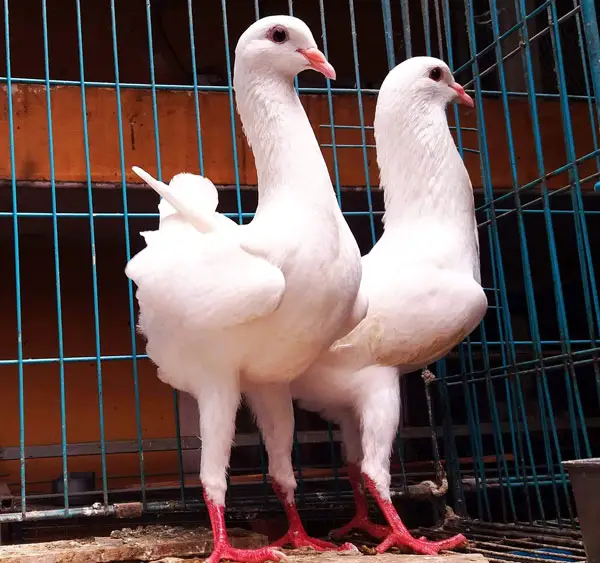
This bird was initially bred as a utility pigeon for meat production. However, as its presence started expanding to Europe and other parts of the world, it evolved into an exhibition pigeon.
Today, it still enjoys its use as a show bird, appearing in various displays and exhibitions across the globe. Moreover, its friendly behavior makes it ideal for keeping as a pet.
Appearance
The Maltese pigeon is a medium-sized bird with a unique appearance in many different color varieties. The breed usually features a puffed-up appearance, earning it the name “monks of the pigeons world.”
Its eyes are deep set and vary in color. However, most of the varieties have yellow eyes, except for the white Maltese pigeon that features blue-colored eyes.
The bird’s beak is stout, medium length, and slightly bent. This beak is also fresh colored save for the blue and black varieties that flaunt black beaks. The pigeon’s wattle has a powder-white and smooth appearance.
Maltese pigeon’s neck is long and slender, with a uniform thickness similar to that of the head. Its breast is pretty broad and stays high, revealing a good depth of its keel.
Its belly is short and round while its rump is feathered and well-developed. Overall, the bird has a cubic body impression that’s not long or cylindrical.
The pigeon’s back is moderately broad and short and its plumage is closely fitted and short. The wings are composed of short-flight geysers covering the tail center with some slight crossing.
Its legs are pretty long, straight, and easily visible while its thighs are muscular and tightly feathered. The legs are feather-free.
This breed has many colors including yellow, blue, red, dun, brown, blue with rods of black, hammered brown, blue-hammered black, and silver. All these colors appear quite clear and intense.
The white varieties have a red cere, while the blue and black varieties have damson cere. The other color varieties including yellow, silver, red, and dun feature flesh-colored ceres in addition to discrete eyelids.
Here’s a video showing Maltese pigeons in their loft
Video:
Behavior
Maltese pigeons are gentle and friendly birds. They’re incredibly social and will enjoy the company of fellow pigeons as well as that of their owners.
The birds will peacefully get along with other birds, especially if you raise them together from a young age.
Like any other animal on the land, however, the Maltese pigeons may become aggressive towards other pigeons or birds if it perceives them as a threat. This is especially so when breeding or protecting their young ones.
Due to their likeness to the chicken, these birds aren’t good flyers. This is due to their poor aerodynamic shapes and the fact that they feature pretty short-flight feathers.
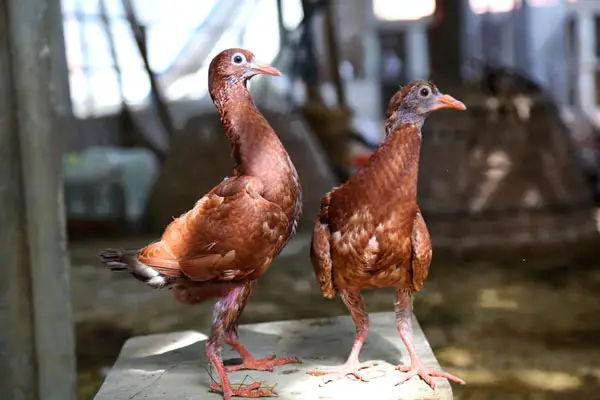
Diet
Maltese pigeons’ diet is typical of any other pigeon breed and consists of seeds, grains, vegetables, fruits, and occasionally small insects.
You can make a birdseed mixture for your pigeon using at least 6 varieties of seeds and grains such as wheat, milo, flaxseed, safflower seeds, paddy, barley, etc. Or you can simply get commercial pigeon pellets and supplements for your pigeon.
In addition, we recommend you feed vegetables and fruits to your pigeon to ensure they get all the essential nutrients.
Clean and fresh water daily is also necessary for these birds.
Maltese Pigeon as pets
Maltese pigeons are ideal for keeping as pets due to their friendly nature. The birds are also highly adaptable and will easily get used to various habitats including agricultural fields, urban areas, etc.
That said, you need to provide these birds with spacious housing so they enjoy plenty of space for flying around.
Clean and disinfect their enclosure regularly to keep away disease-causing bacteria and parasites.
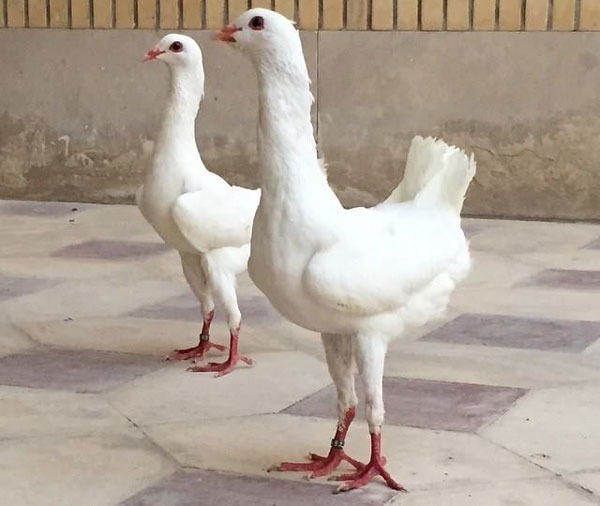
Because these pigeons are also social birds, you can keep them in pairs or in small groups without worrying about any conflicts arising among them.
Don’t forget to provide your bird with proper nutrition, clean and fresh water daily, and regular vet checkups to keep them safe from various health problems.
Breeding guide
If you wish to keep Maltese pigeons for breeding purposes, then you’ll be happy to know that they’re good breeders and don’t require much in terms of equipment and supplies.
You just need to provide them with a suitable nesting site, e.g. a nesting box, proper nutrition, and comfortable living conditions.
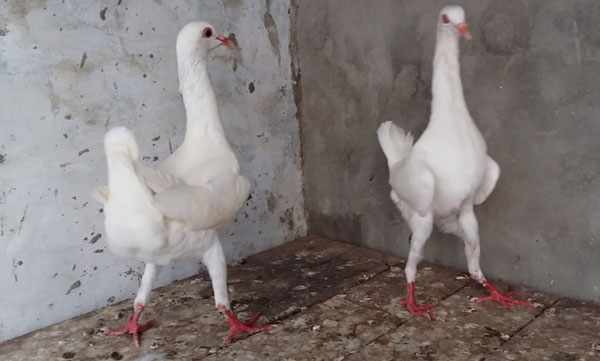
A typical female Maltese pigeon lays 2 eggs per clutch, just like other pigeons. Both the male and female will take part in incubating the eggs until they hatch into young ones.
This pigeon breed makes dependable parents who usually take good care of their young ones.
Price
You can get a Maltese pigeon for a cost as low as $50 to upward of several hundred dollars.
The price variation is usually caused by factors such as health, age, breeder, location, etc.
Researching reputable breeders in your area increases your chances of getting high-quality and healthy birds at a fair price.
Lifespan
Maltese pigeon has a life expectancy of around 10 years or more in captivity with proper care. The factors that influenced the lifespan of this bird include diet, living conditions, and genetics.
If you want your pigeon to live for many years, make sure you provide it with a healthy and balanced diet that contains all the necessary nutrients, keep them in a comfortable and hygienic housing, and take the birds to an avian vet for regular checkups.
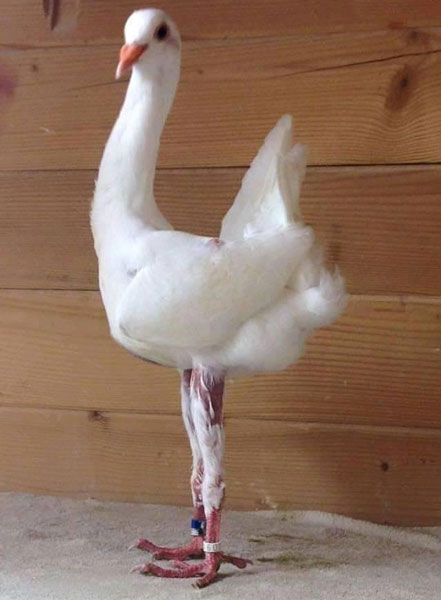
Final Verdict
Maltese pigeons are one of the most popular breeds in pigeon exhibitions across the world. This is due to their unique appearance, and the many color varieties they come in. Many pigeon enthusiasts and fanciers also keep these birds as pets. Their social and gentle nature makes them easy to handle and bond with.
If you plan to keep these birds as pets, make sure you provide them with proper care to keep them healthy and happy. A nutritious diet, comfortable living space, clean living environment, and regular checkups by a vet will keep your pigeons healthy for years to come.
